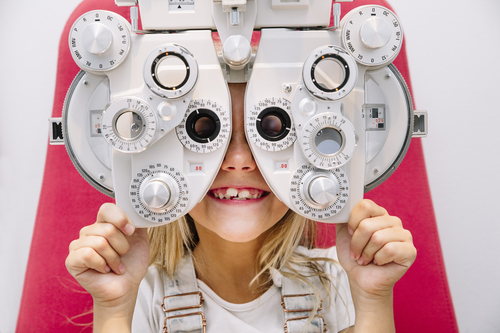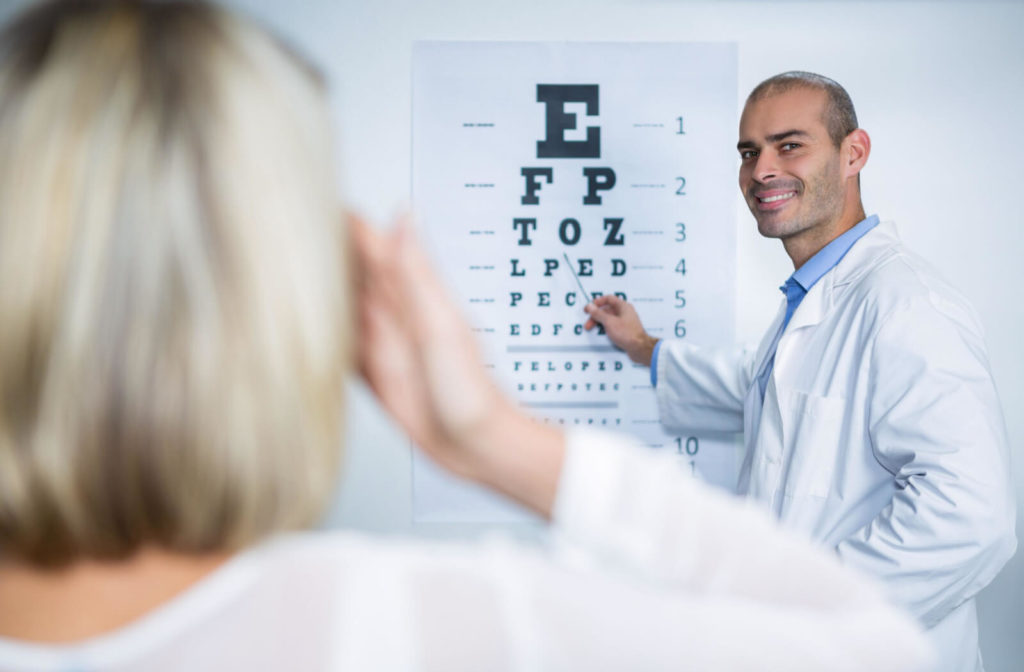Discovering the most up to date Technological Improvements in Optometry and What They Mean for Eye Doctors
In the ever-evolving area of optometry, current technological developments are reshaping how practitioners approach eye treatment. From the precision of Optical Comprehensibility Tomography to the nuanced understandings supplied by AI-driven analysis tools, these innovations are establishing new standards in individual assessment and therapy. Teleoptometry is poised to redefine accessibility, making certain that expertise transcends geographical limitations. As these improvements permeate the method, eye doctors are confronted with the challenge of accepting these devices to enhance client end results. The question stays: how will these technological changes redefine the duties and responsibilities within the occupation?
Developments in Diagnostic Tools
Progressing the area of optometry, advancements in diagnostic devices have reinvented the means eye care specialists assess and diagnose ocular problems and visual impairments. The previous decade has actually observed substantial technological advancements, enabling even more accurate and comprehensive examinations.
One more trick innovation is the intro of advanced corneal topography systems, which map the surface area curvature of the cornea with precision. These tools are specifically useful for fitting get in touch with lenses and detecting corneal disorders. Electronic retinal imaging has actually changed traditional ophthalmoscopy, supplying detailed, panoramic sights of the retina that promote thorough visual evaluations.
The development of wavefront aberrometry has actually also been crucial, enabling the evaluation of refractive mistakes with unrivaled accuracy (Opticore Optometry). This innovation aids in personalizing rehabilitative lenses and boosting medical results for refractive surgical procedures. Collectively, these diagnostic innovations encourage eye doctors to deliver remarkable patient treatment, ensuring very early treatment and customized therapy strategies, ultimately improving visual wellness end results
AI in Person Administration
Structure on the foundation of innovative analysis tools, the incorporation of expert system (AI) in individual management stands for a transformative jump for optometry. AI systems are progressively utilized to boost performance, accuracy, and personalization in patient treatment. By evaluating large amounts of data, AI can determine patterns and anticipate prospective ocular conditions, enabling optometrists to customize treatments better. This capability is essential in handling persistent eye diseases such as glaucoma and diabetic retinopathy, where early detection and continuous surveillance are essential.
Moreover, AI-driven platforms assist in streamlined person interactions and administrative processes. Automated organizing, virtual consultations, and individualized follow-up plans not just improve client contentment yet likewise optimize time monitoring for professionals. These systems can triage people based on the necessity of their conditions, making certain that those in vital requirement receive timely interest.
In addition, AI enhances decision-making by supplying optometrists with evidence-based referrals and therapy paths. By incorporating data from electronic health documents, AI devices use insights that notify professional choices, decreasing the threat of mistakes and improving client outcomes. As AI remains to evolve, its duty in individual administration will likely increase, reshaping the landscape of optometric treatment.
Advances in Retinal Imaging
In the realm of optometry, retinal imaging has actually experienced impressive technical improvements that are improving analysis capacities and patient treatment. Developments such as Optical Coherence Tomography (OCT) and fundus photography have reinvented just how optometrists picture and examine the retina. OCT, specifically, gives high-resolution, cross-sectional images of the retina, permitting the detailed exam of its layers. This ability is very useful for very early discovery and administration of problems like glaucoma, diabetic retinopathy, and age-related macular degeneration.
Improved imaging methods like OCT angiography are more refining analysis precision. This non-invasive strategy maps blood circulation in the retina, providing essential understandings into vascular health without the demand for color shots. Furthermore, adaptive optics modern technology is being incorporated right into retinal imaging systems to fix eye aberrations, delivering extraordinary image clearness. Such advancements facilitate the recognition of min retinal adjustments that could represent illness progression.
Additionally, innovations in expert system are augmenting retinal imaging by making it possible for automated analysis of huge datasets. These systems help optometrists in determining patterns a measure of pathology, thus improving analysis accuracy and effectiveness. Collectively, these technologies are changing retinal imaging into a keystone of modern-day eye care, enhancing outcomes and increasing healing possibilities.
Teleoptometry's Expanding Function
Teleoptometry is increasingly coming to be an essential component of eye treatment, driven by improvements in digital interaction and analysis tools. As optometry accepts digital improvement, teleoptometry promotes remote assessments, allowing eye doctors to extend their solutions past standard boundaries. This is specifically advantageous in country and underserved areas where accessibility to specialized eye treatment is frequently minimal. By leveraging high-resolution video conferencing and progressed retinal imaging, eye doctors can carry out comprehensive eye examinations from afar, ensuring timely medical diagnosis and therapy.
The combination of synthetic intelligence (AI) additional boosts teleoptometry, allowing the analysis of aesthetic information and aiding in the detection of eye conditions such as glaucoma and diabetic retinopathy. AI-powered formulas can rapidly translate intricate imaging data, providing optometrists with important understandings that strengthen scientific decision-making.
In addition, teleoptometry supports continuity of treatment with seamless integration with electronic wellness records (EHRs), permitting optometrists to keep extensive individual backgrounds. When seeking advice from with various specialists., this makes sure that patients receive regular and tailored treatment even.
In spite of these advantages, obstacles continue to be, including making certain data safety and security and handling client assumptions. Nevertheless, teleoptometry click over here now stands for a significant stride in the direction of even more available, reliable, and patient-centered eye treatment. As innovation develops, its function is poised to broaden further.

Future Patterns in Eye Care
A myriad of innovative fads is set to reshape the future of eye care, driven by technological advancements and the evolving needs of patients. One considerable fad is the assimilation of artificial knowledge (AI) in diagnostics, which promises to improve the precision and effectiveness of eye examinations. AI algorithms can evaluate huge amounts of information from retinal pictures, possibly discovering problems like diabetic person retinopathy and glaucoma earlier than typical approaches.
Additionally, individualized medication is gaining grip in optometry, with hereditary testing notifying customized therapy strategies. This method aims to maximize person outcomes by customizing treatments to individual genetic profiles. Wearable modern technology, such as wise contact lenses, is also imminent, supplying real-time monitoring of intraocular pressure or sugar degrees, thus offering continuous understandings into systemic and eye wellness.
The adoption of increased fact (AR) and virtual fact (VR) in training and person education is an additional emerging fad. These innovations offer immersive experiences that can enhance understanding and skills both for clients and eye doctors. As these fads evolve, optometrists should stay abreast of technical innovations to give cutting-edge care, guaranteeing better client results and fulfillment in the vibrant landscape of eye treatment.
Conclusion

Collectively, these analysis advancements encourage optometrists to supply premium Visit Website client treatment, ensuring early treatment and customized treatment approaches, inevitably enhancing aesthetic health outcomes.

As these innovations proceed to evolve, optometrists need to adjust and integrate them into technique, inevitably enhancing operations performance and elevating the requirement of eye treatment delivered to people.